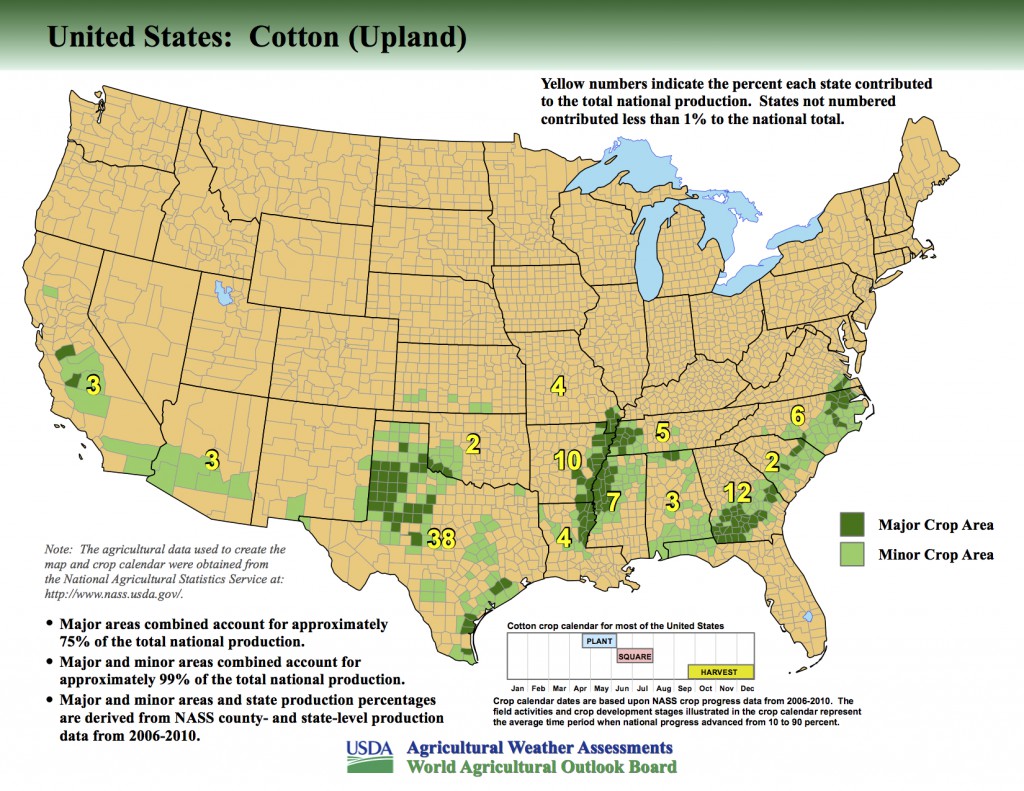A total of 40 new maps have been prepared, showing major crop-producing areas in the United States, China, India, Pakistan, and South Africa. Earlier versions of these maps appeared in the Major World Crop Areas and Climatic Profiles (MWCACP) handbook that contains climatological data, agricultural statistics, and crop calendar information for major agricultural areas worldwide, and serves as a reference for evaluating the effects of weather on world crop production. The new maps, listed by country and commodity, supplement the MWCACP publication by updating illustrations of cropping patterns in these countries:
- United States: barley, corn, cotton, flaxseed, peanuts, rice, sorghum, soybeans, sugarbeets, sugarcane, durum wheat, spring wheat, and winter wheat
- China: corn, cotton, groundnuts, rapeseed, rice, soybeans, sugarcane, and wheat
- India: corn, cotton, groundnuts, rapeseed, rice, soybeans, sugarcane, and wheat
- Pakistan: cotton, rice, and wheat
- South Africa: corn, cotton, oranges, soybeans, sugarcane, sunflowers, and wheat
These maps were developed by the USDA World Agricultural Outlook Board through a contract with the George Mason University Environmental Science and Technology Center. PDF versions of these maps, and the MWCACP publication (1994 revised), are available here.
Each week, Fill Your Plate will highlight a different crop or livestock raised in the United States. This week, we highlight cotton. According to the USDA’s infographic below, Arizona farmers contribute towards 3% of the national average of cotton grown in the United States. You can go to Fill Your Plate to see a list of Arizona farmers who grow and sell cotton.


